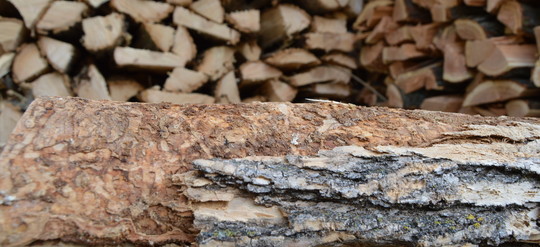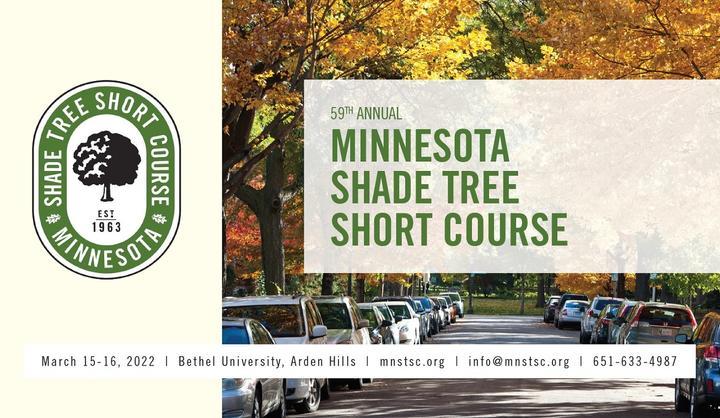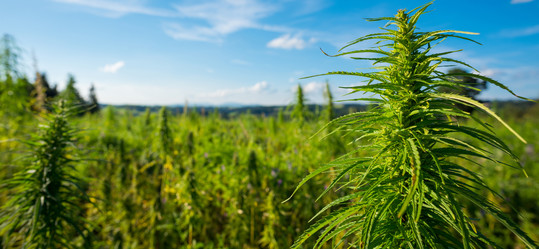|
The Minnesota Department of Natural Resources (DNR) welcomes applications from local units of government within Minnesota to assist communities in managing ash for emerald ash borer on public and Tribal lands, and improve community forests by planting a diversity of trees and involving community members. The DNR has $2.4 million available to fund projects managing emerald ash borer (EAB) through community forestry activities on public lands and tribal lands. Funding for this project was provided by the Minnesota Environment and Natural Resources Trust Fund as recommended by the Legislative-Citizen Commission on Minnesota Resources (LCCMR). No minimum dollar amount exists. The maximum amount that will be funded is $150,000.
- Application Deadline: Monday, January 24, 2022
Protect Community Forests by Managing Ash for EAB Grants Program - Informational Webinar (Recorded 11/29/2021)

Grant Opportunity: Lawns to Legumes
The Lawns to Legumes pilot program offers a combination of workshops, coaching, planting guides, and cost-share funding (individual support grants) for installing pollinator-friendly native plantings in residential lawns. The program also includes demonstration neighborhoods, which are pollinator programs run by local governments and nonprofit organizations with support from Minnesota Board of Water and Soil Resources (BWSR), and a public education campaign to raise awareness about creating pollinator habitat. BWSR is partnering with Metro Blooms and Blue Thumb – Planting for Clean Water to administer the program. Find details on Individual Support Grants, Demonstration Neighborhoods, public outreach, and more can be found on the BWSR Lawns to Legumes website.
Funding is provided by the Environment and Natural Resources Trust Fund (ENRTF) and is targeted in priority areas to benefit the Rusty patched bumblebee and other at-risk species.

Weed of the Month: Noxious Weed Grant Achievements
Since 2017, the Minnesota Department of Agriculture (MDA) has awarded grants through the Noxious Weed and Invasive Plant Grant to counties and municipalities. With support from the Minnesota Legislature and the Environmental and Natural Resources Trust Fund, the MDA has awarded over $1.2 million to 120 projects to mitigate the spread of noxious weeds and invasive plants.
Through these grants, the MDA has seen many positive impacts not only with reductions of weed infestations but also increased coordination between municipalities and private landowners who become motivated to treat infestations on their own lands.
One group that came together to focus on mitigating wild parsnip infestations is the Cannon Valley Noxious Weed Group (CVNWG). The CVNWG encompasses four townships in Rice and Dakota counties: Bridgewater (Rice), Northfield (Rice), Greenvale (Dakota), and Waterford (Dakota). John Holden from the CVNWG says that, “when [Bridgewater] started, we were focused on treating wild parsnip.” Over the years, the group found that treatments alone would not be the most effective approach to ridding these townships of wild parsnip. Holden says, “as we progressed, we realized how little the public knows about wild parsnip and we shifted our main goal to educational tools and processes.”
Read More

Emerald Ash Borer Found in Nicollet and Redwood Counties
The Minnesota Department of Agriculture confirmed emerald ash borer in Nicollet and Redwood counties in late November. Thirty counties in the state now have EAB.
An MDA employee was surveying for EAB near reported infestations in Brown County when he noticed ash trees with signs of EAB at Sailors and Soldiers Memorial Park Campground in Sanborn, Redwood County, and across the Minnesota River from New Ulm in Lafayette Township, Nicollet County. Both sites are less than 10 miles from previously confirmed EAB infestations. MDA staff were able to find live EAB larvae and collect samples for federal identification.
Because this is the first time EAB has been identified in Nicollet and Redwood counties, the MDA is enacting emergency quarantines to limit the movement of firewood and ash material out of the counties. The MDA issues quarantines for all counties known to have EAB to reduce the risk of further spreading the tree-killing insect.
Read More

Check Ash Trees For Woodpecker Damage
This time of year is great to scout ash trees for signs of an emerald ash borer infestation. Look for woodpecker damage in the mid- to top canopy of ash trees. The MDA created a training video on how to inspect ash trees for signs of EAB.
Want to see EAB infested ash trees firsthand and ask questions? Come to one of the MDA's free field workshops in 2022 to learn more about EAB and see what EAB damage looks like and how to easily spot infested trees. Watch for an email in early 2022 with the dates and locations or check the MDA EAB webpage.

Brown Marmorated Stink Bug
During times of warm weather during the winter, you may notice a few insects active in your homes. Some examples of these insects include box elder bugs, lady beetles, and the invasive brown marmorated stink bug. The MDA is tracking brown marmorated stink bugs throughout the state and would like you to report if you see one. Please take a clear picture of the insect or collect the insect for identification. More information on how to report can be found on the Arrest the Pest webpage.

Shade Tree Short Course
Discuss, debate, and disseminate best practices on all things shade tree with fellow arborists at this two-day conference. The Minnesota Shade Tree Short Course has been ensuring tree health since 1963. The MDA will be presenting tree diseases, invasive insects, noxious weeds, and more at the 2022 Shade Tree Short Course.
March 15-16, 2022
Read More

Industrial Hemp Forum 2022
The MDA invites anyone interested in hemp and hemp production to its 2022 Industrial Hemp Forum. The half-day virtual evert will be held Wednesday, February 9, 2022, from 9 a.m. to noon. The event is free to attend.
Forum topics include updates on the MDA’s hemp licensing requirements, the new inspection requirements for those processing hemp into other products, and opportunities in fiber production.
“Our virtual forum is designed for anyone currently involved in the industry or those interested in getting involved with hemp production, processing, or marketing,” said MDA Assistant Commissioner Whitney Place. “We want to share as much information as we can about this crop so growers and processors can be successful.”
Visit the 2022 Industrial Hemp Forum webpage for more information and to register.


Minnesota Certified Firewood
The Minnesota Department of Agriculture has certified 12 firewood producers in the state of Minnesota for heat treatment of firewood. Look for the logo when purchasing firewood. It means the firewood is safe to move and is free of damaging pests, like emerald ash borer.
Certified firewood producers:
- Emily Forest Products / Katie's Firewood
- Minnesota Firewood LLC
- Moonlight Firewood
- Northstar Hardwoods Inc.
- Paul's Fireplace Wood Inc.
- Price Firewood
- Pro Cut Firewood
- Stoked Firewood
- Sunset Firewood Company
- TSL Firewood
- WLC Firewood
- Wood Chuckers Firewood LLC
|
|